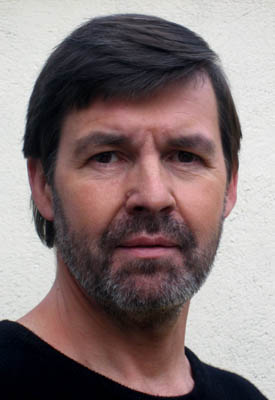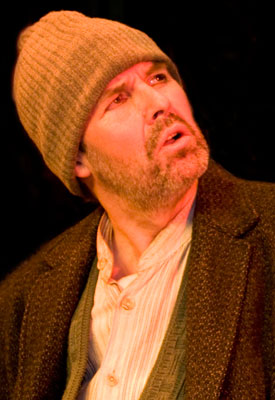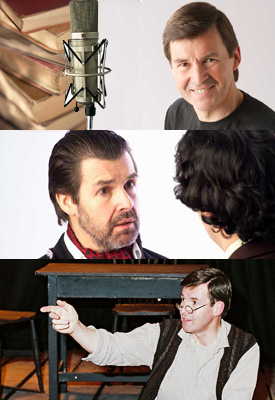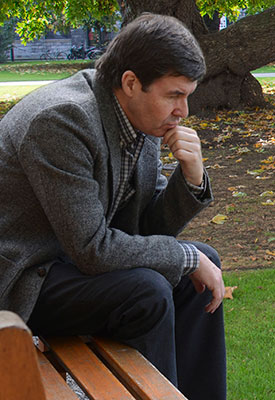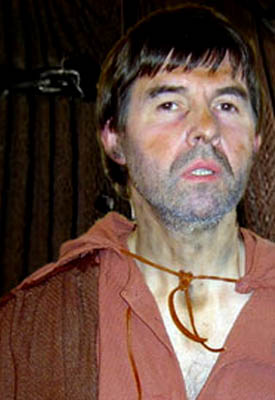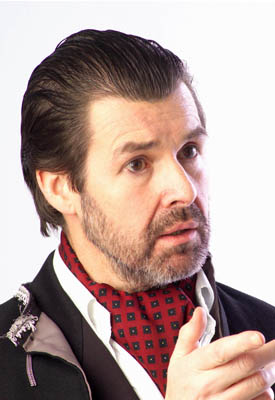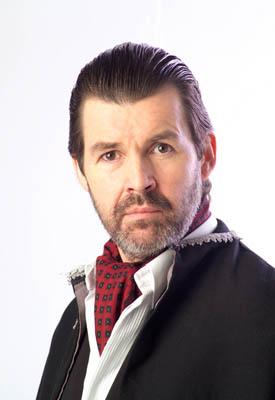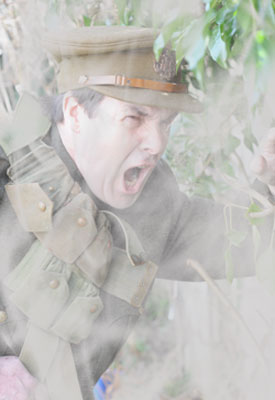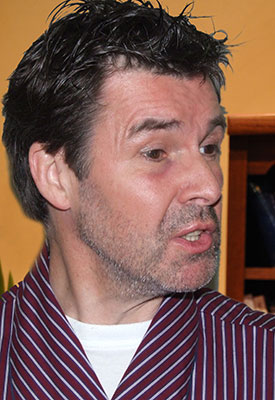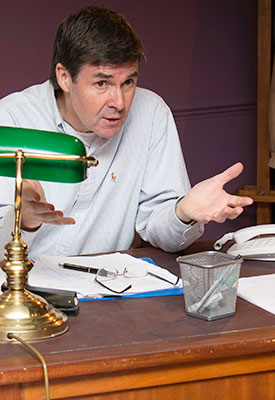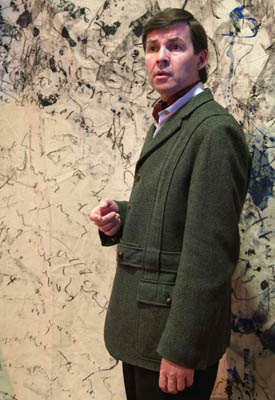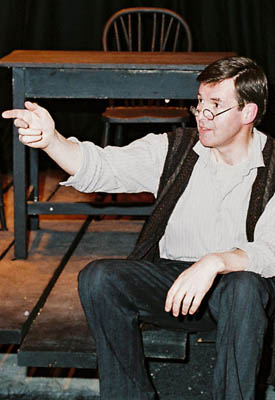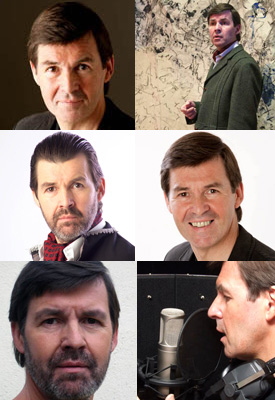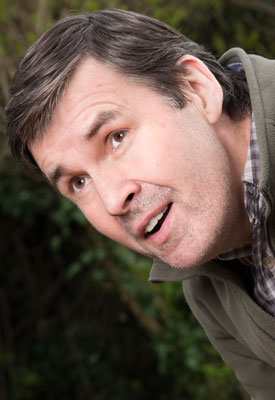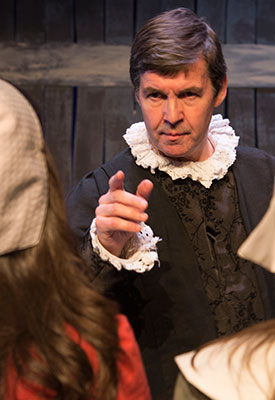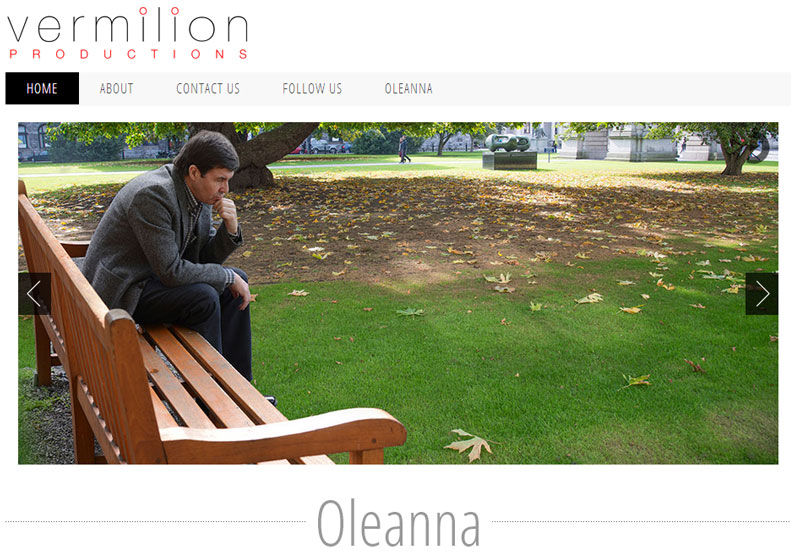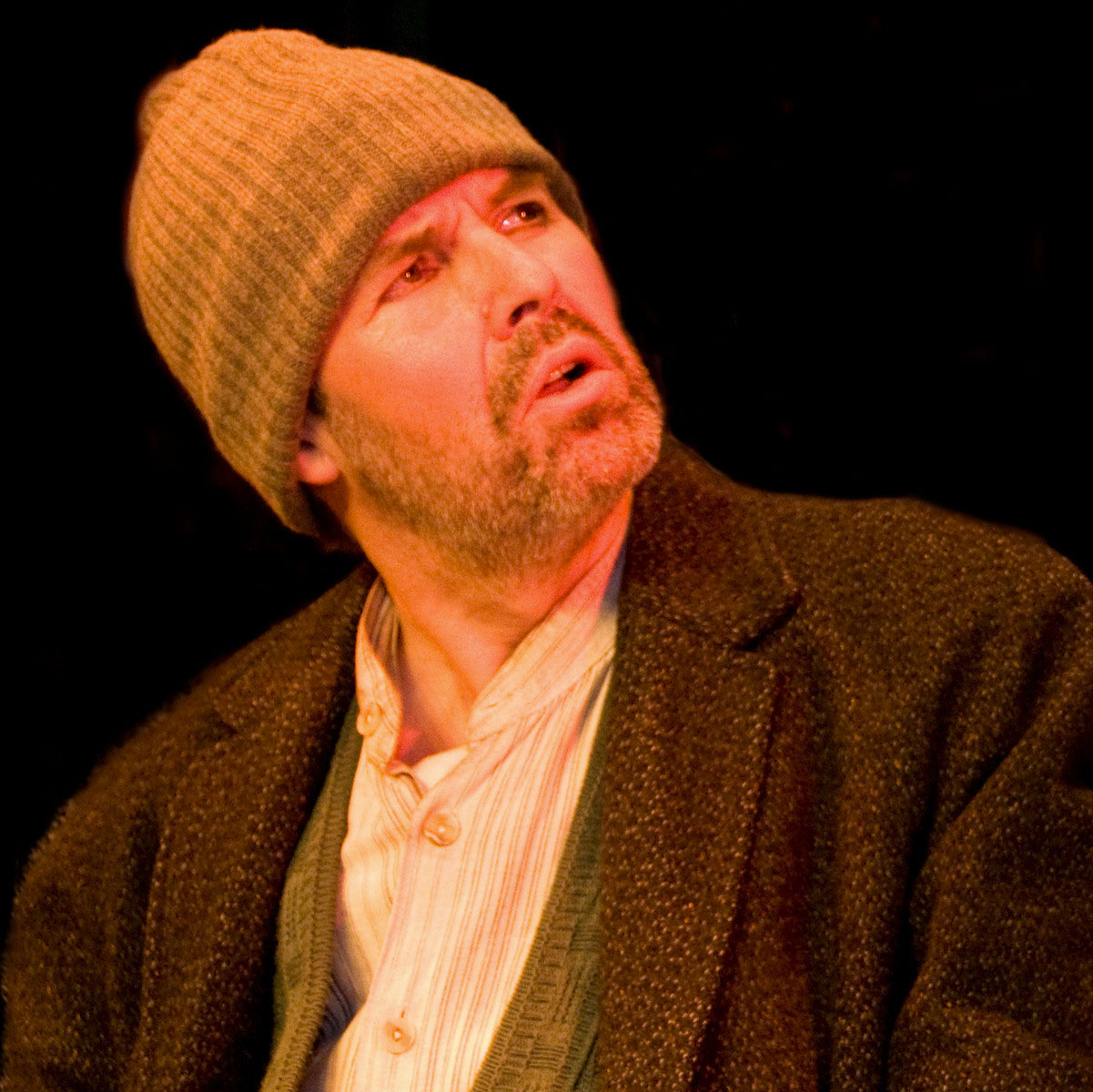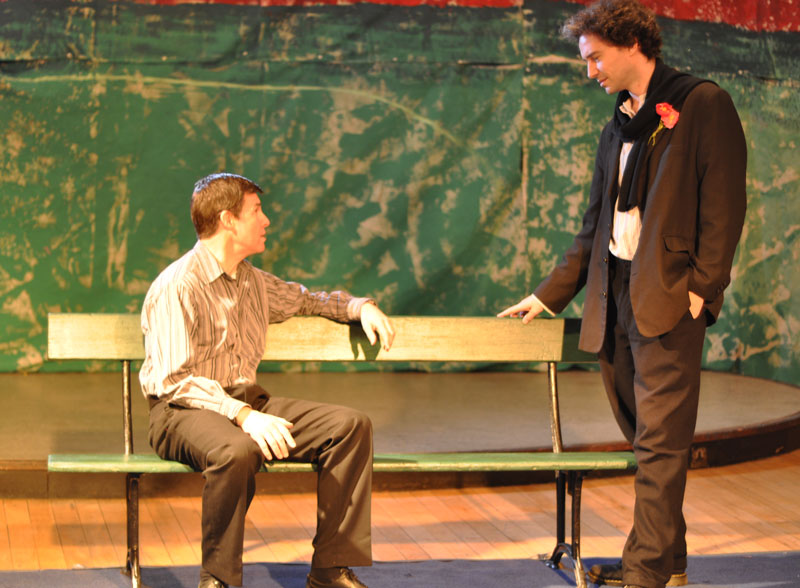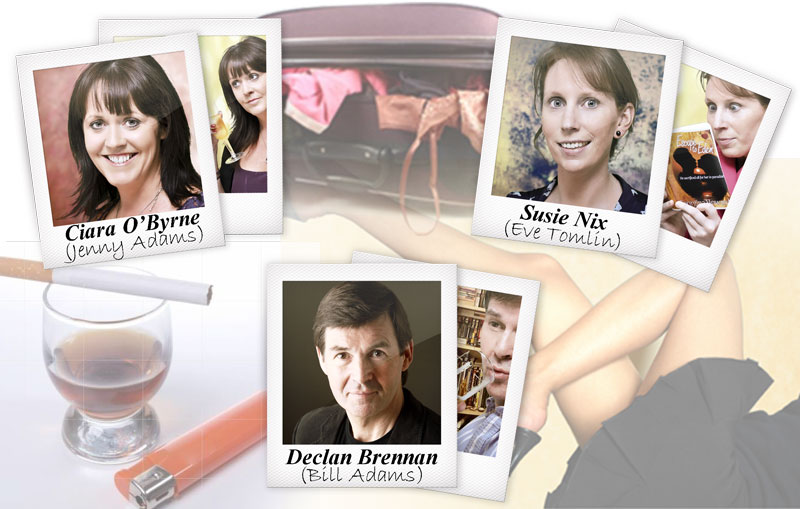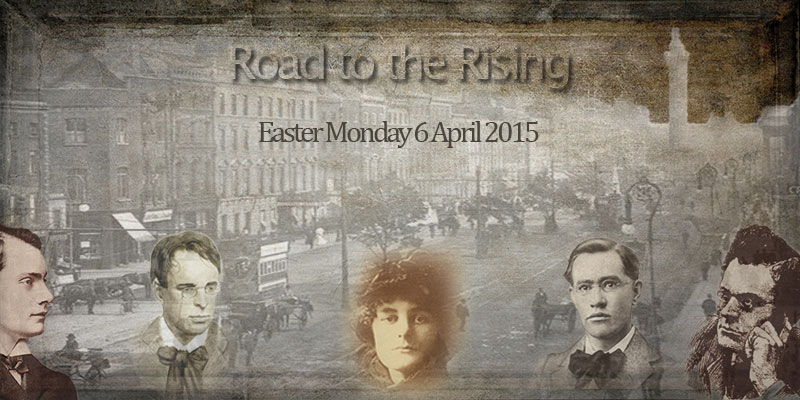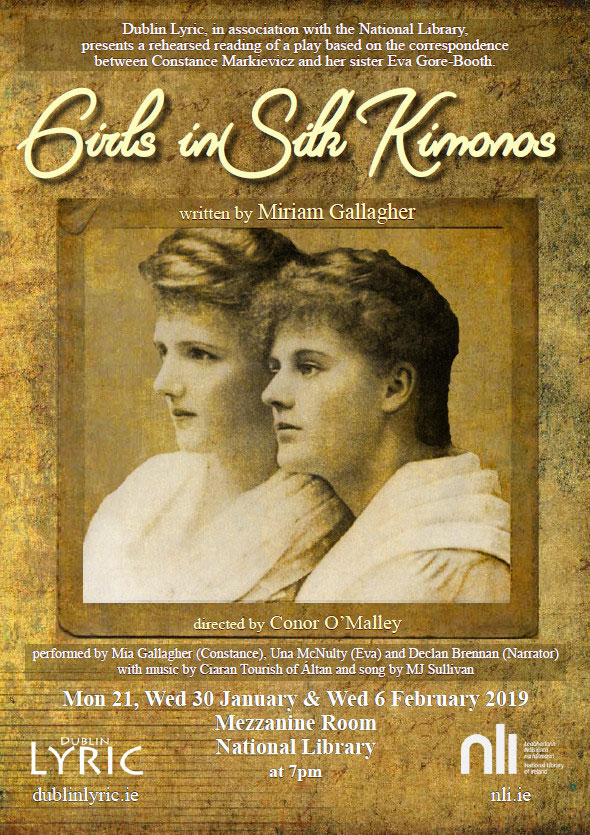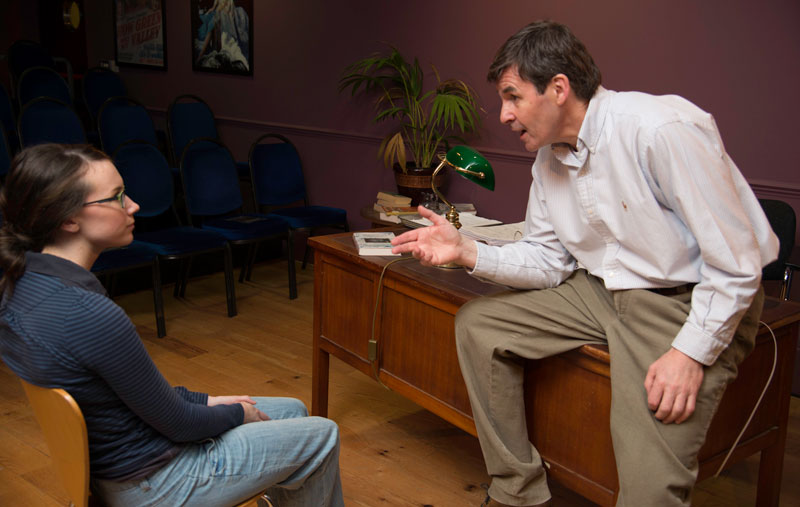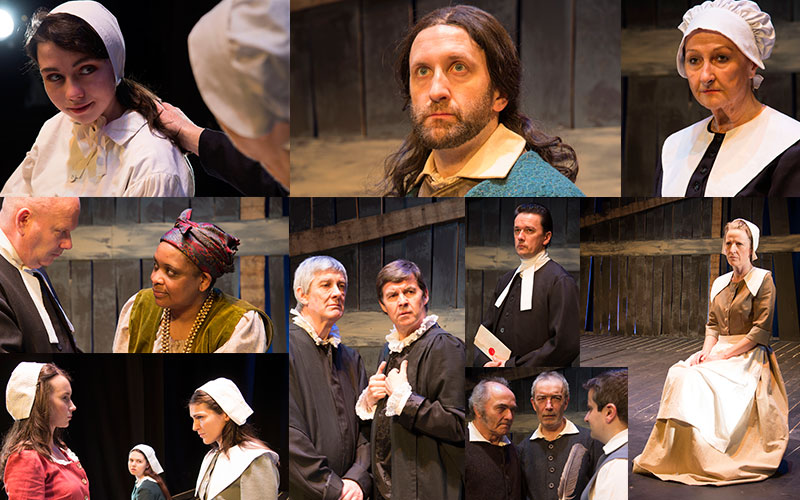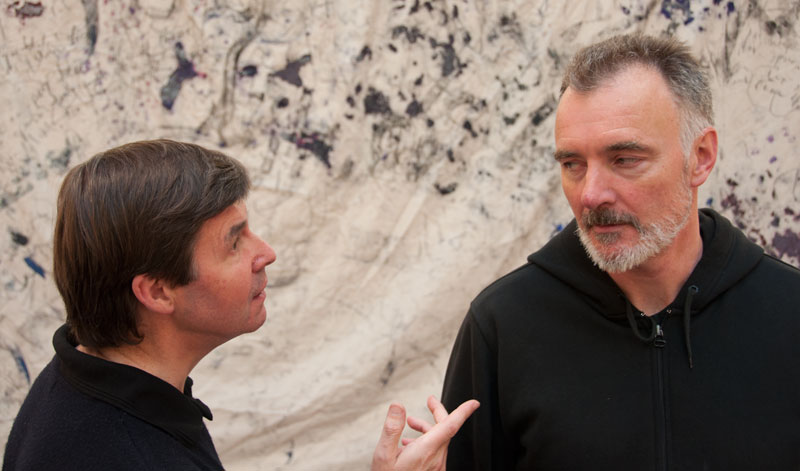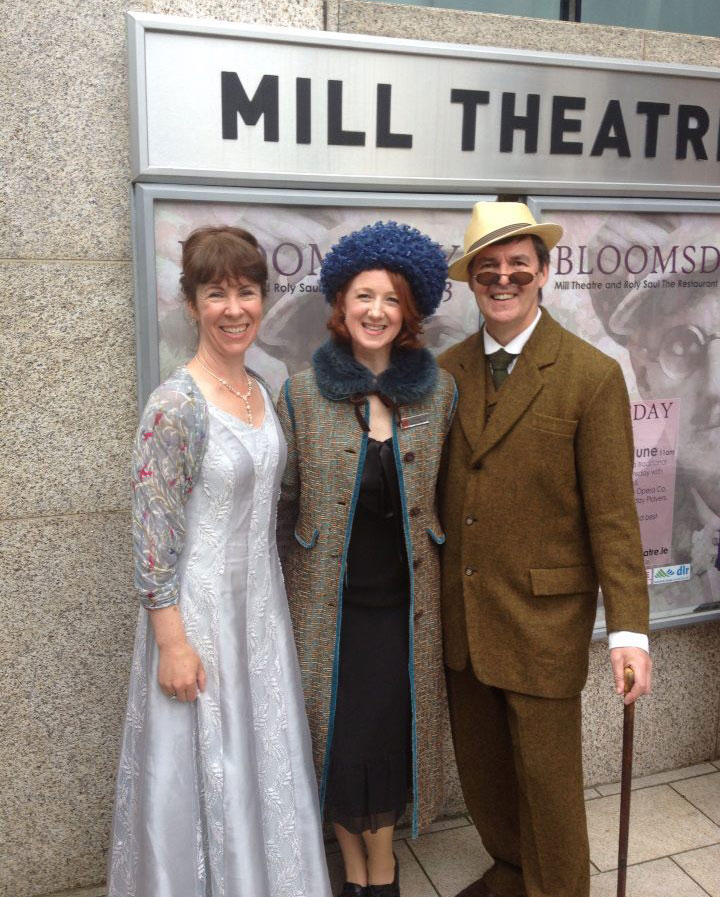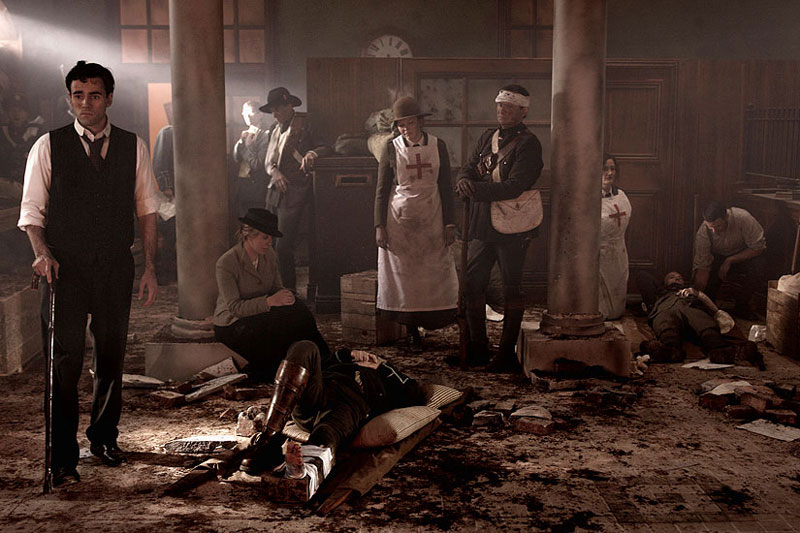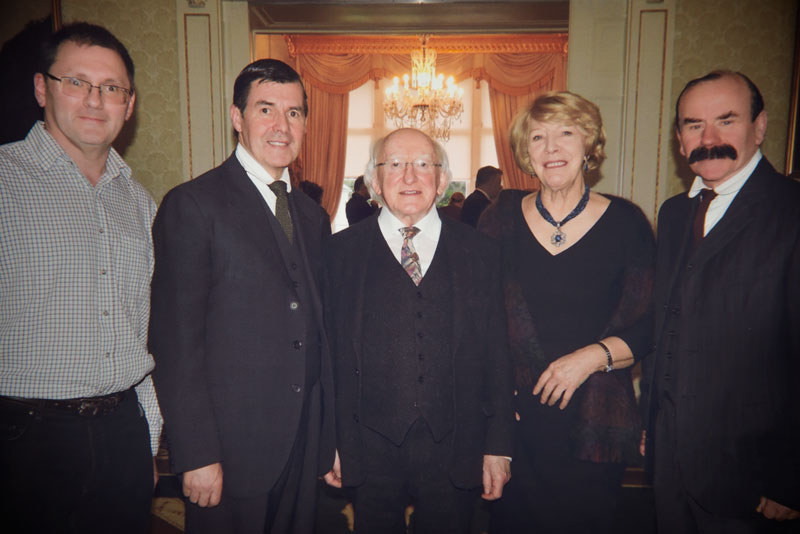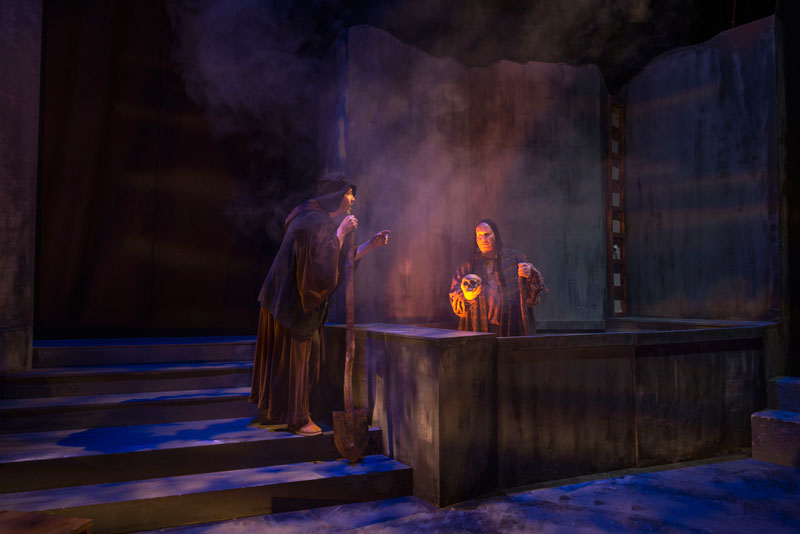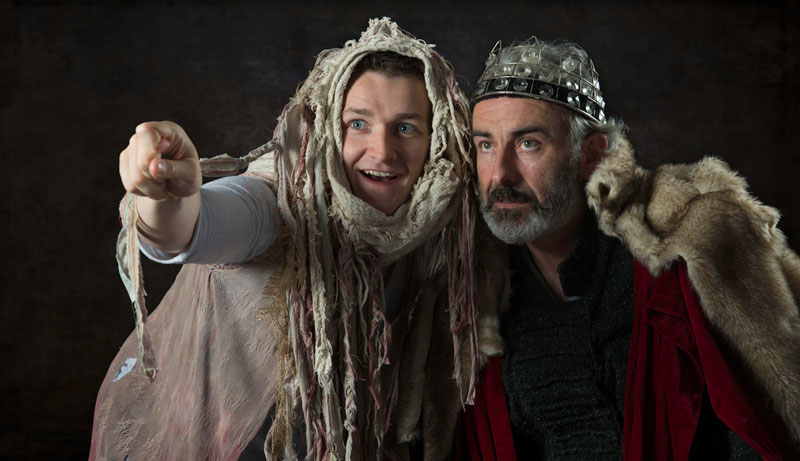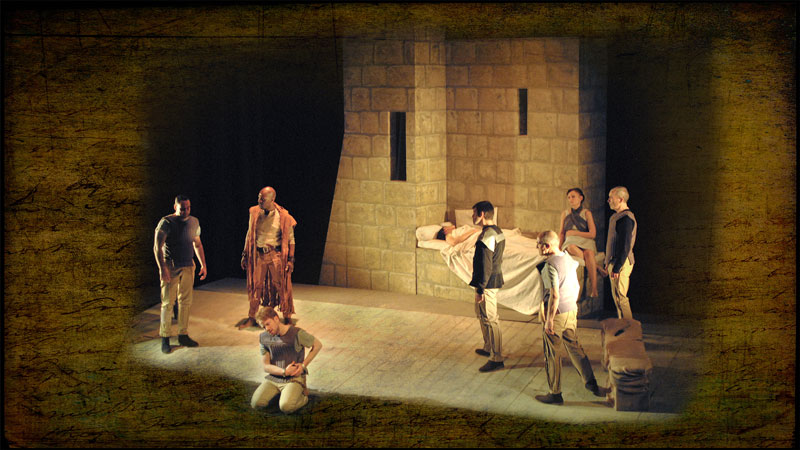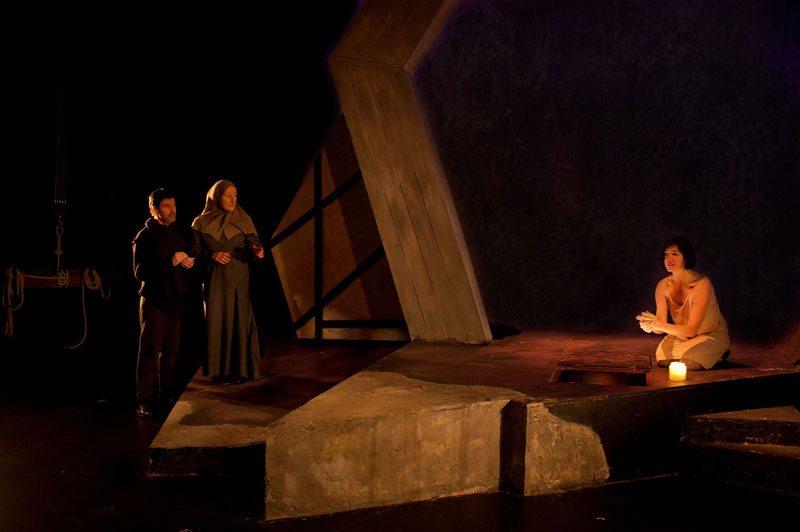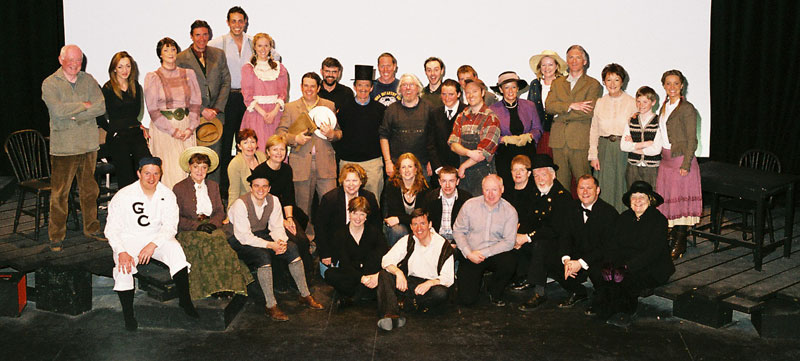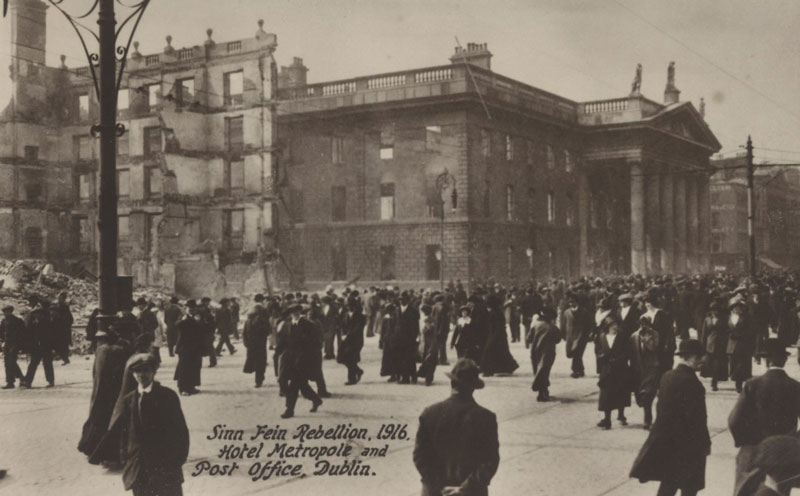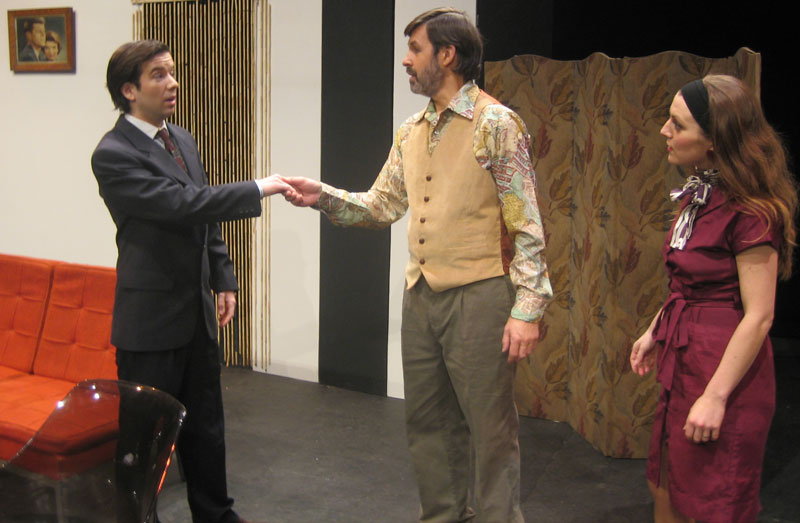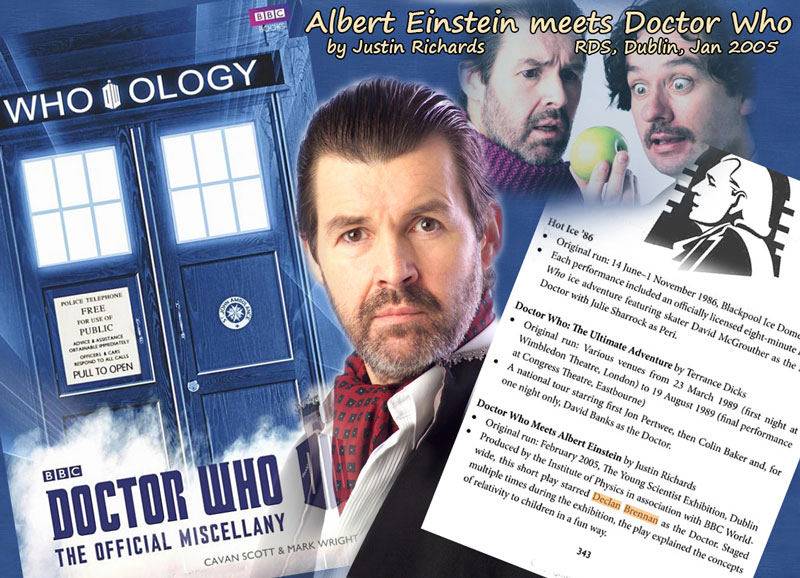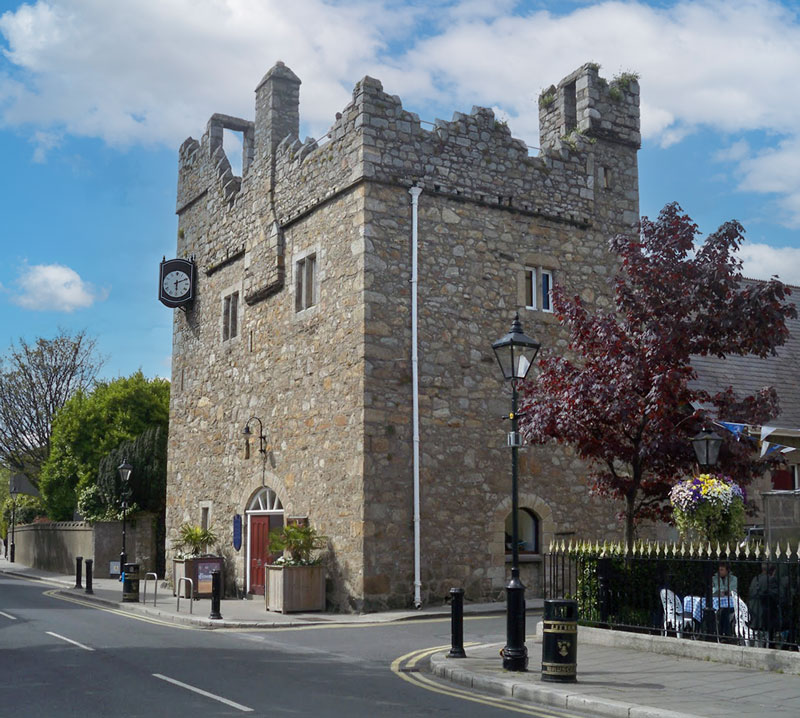Performance
Acting & Presentation — Stage & Camera
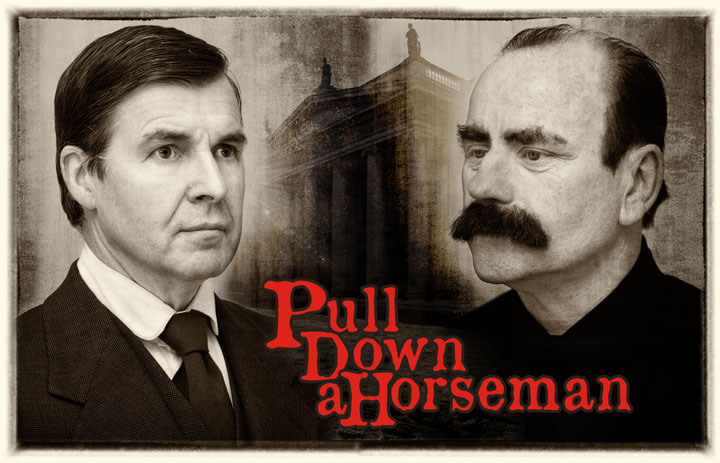
(l-r) Declan Brennan as Patrick Pearse and MJ Sullivan as James Connolly in 'Pull Down a Horseman'. The play was written by the Monaghan-based playwright, Eugene McCabe for the 50th Anniversary of the Rising in 1966 and was later presented in the Abbey Theatre. In a new production, directed by Conor O'Malley, the play is one of many dramatic and historical events in 2016 for the centenary of the events of 1916, which led to the establishment of the modern Irish state.
Play for centenary of Easter 1916 Rising in 2016
During 2016, I played Patrick Pearse in a series of presentations of Eugene McCabe's play Pull Down A Horseman, produced by Dublin Lyric. The play is about a secret meeting, between Patrick Pearse, James Connolly and the Irish Republican Brotherhood (IRB), which took place over three days, ending on Sunday 16 January 1916. They debate the aims and objectives of the Easter Rising and agree a date for it. Venues in Dublin included the National Museum, National Library, Liberty Hall and Áras an Uachtaráin; and the play was also performed in the Lyric Theatre, Belfast. Read more.
Readings in the National Library – January & February 2019
Dublin Lyric, in association with the National Library, presented performances in the Mezzanine Room at the National Library, Kildare Street, Dublin in November 2018 and on a further three evenings in January & February 2019.
The play, Girls in Silk Kimonos by the late Miriam Gallagher, centres on the correspondence between Constance Markievicz and her sister Eva Gore-Booth. After the performance, director Conor O'Malley leads a lively discussion with members of the audience.
The acting team is Mia Gallagher and Una McNulty in the roles of Constance and Eva respectively; and Declan Brennan in the role of Narrator, who also gives voice to another seven characters. The reading is directed by Conor O'Malley, music is provided by Ciaran Tourish of Áltan and MJ Sullivan sings 'James Connolly' by Patrick Galvin "... the hero of each working man ...". For more see the Dublin Lyric website.
Video — Performance
As the home page declares, the work shown on this site is 'all about performance'. The projects outlined here are just a sample of the type of work covered when I step in front of a live audience or a camera and perform in person. That can range from acting on a theatre stage, or playing a role that is recorded on camera. It may be storytelling or reading at an event or on radio, or master of ceremonies at a corporate or other function. Much of this work is never recorded, but there is an example of performing to camera included on my YouTube Channel. The dramatised corporate video below was produced for the Irish Commercial Mediation Association.

Since April 2003, the ICMA has been promoting and developing
commercial mediation in Ireland. It is a voluntary not-for-profit
association, where members are those interested in the provision
and development of commercial mediation. The extract from the
video (above) highlights my role as the 'Mediator' in the drama
documentary produced to promote their work. To see the full video,
visit icma.ie
Audio Playlist — Acting
The readings in the Audio Player are available for download. Some are taken from roles played on stage while others are from writing that lends itself to audio media and portrays a variety of characters.
To listen to one of the audio samples, select the file name or format (MP3 or OGA). To download one of the files, right-click (Windows) or ctrl-click (Mac) on the MP3 or OGA format link beside the file name.
(OGA is an audio OGG file required by some internet browsers.)
Writers:- 1:Shakespeare, 2:Oscar Wilde, 3:John Steinbeck, 4:Eugene
McCabe,
5:Thornton Wilder, 6:Seán O'Casey, 7:Declan Brennan
I established Vermilion Productions as a vehicle for performers and creative teams to meet from time to time to create productions of a variety of works for theatre and other venues.
Two of my roles under Vermilion Productions were Dr Who at the Young Scientist Exhibition in the RDS, Dublin and the professor in David Mamet's Oleanna at the Mill Theatre Studio, Dublin.
I have also worked as part of the creative team with Mill Productions, a performance unit which was attached to the Mill Theatre, Dundrum Town Centre, south of Dublin city, after it opened in 2006.
Other Voice Acting — ADR
Work on ADR (Additional or Automated Dialogue Replacement) is one of
those aspects of cinema and television post production which can be
described as an art designed to conceal itself. One of the most
interesting examples of such voice acting for me was working on
providing the dialogue that surrounded the lead actors in '
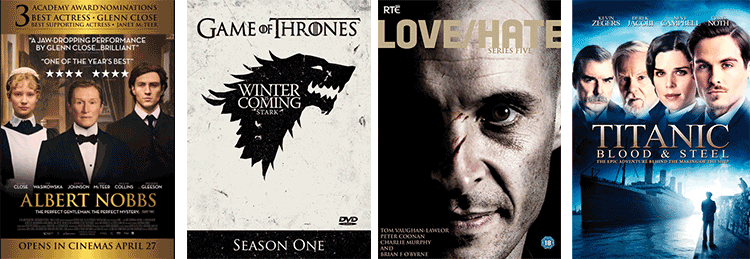
Examples of ADR work: Albert Nobbs — Game of Thrones — Love/Hate — Titanic: Blood and Steel
‘Albert Nobbs’ (2011) was based on a novella by Irish novelist George Moore. It was shot in Dublin and featured Glen Close in the lead role. She and Janet McTeer received Academy Award, Golden Globe Award and Screen Actors Guild Award nominations. The story is about a woman living as a man in order to find work in the harsh environment of 19th-century Ireland. She works as a hotel waiter, secretly saving to buy a tobacco shop to gain some measure of freedom and independence.
‘Titanic: Blood and Steel’ was a 12-part television costume drama series about the construction of the RMS Titanic in Belfast. It was shown one hundred years after the ship sank in the North Atlantic Ocean in the early morning of 15 April 1912 following a collision with an iceberg during her maiden voyage from Southampton to New York.
The Irish TV series ‘Love/Hate’ is set in Dublin's criminal underworld. The story is about rivalries within criminal gangs and was broadcast by RTÉ television from 2010. It was sold in the UK, the US and several other countries including Brazil, Israel, Singapore, Australia, New Zealand and South Korea. RTÉ International also sold it to Netflix. I worked on ADR for two of the five seasons up to 2014.
Selected Acting roles & characters played |
|
Where it appears, select 'Read more' to view additional notes and a photograph. |
|
Two characters in Neil Simon's London Suite and Victor Velasco in a production of Barefoot in the Park (also by Simon) which was one of the last plays performed in Andrews Lane Studio, Dublin. Read more. |
|
Three very different roles in Alan Ayckbourn's Confusions. |
|
The iconic doctor in Albert Einstein meets Dr Who by Justin Richards at the Young Scientist Exhibition in the RDS, Dublin. Read more. |
|
John Corbett in The Words upon the Window Pane and King Conchubar in On Bailes Strand both by W.B. Yeats. |
|
Patrick Pearse in Eugene McCabes Pull Down a Horseman, which centres on a debate between Pearse and Connolly about the Easter Rising. This was performed, in the round, in the National Library, the National Museum and Liberty Hall, Dublin, first in 2007 and again in 2010 and 2016. Read more. |
|
King Creon in W. B. Yeats translations of Sophocles Greek Tragedies Oedipus Rex and Oedipus at Colonus as part of the major Yeats exhibition in the National Library. |
|
The Cardinal Inquisitor in The Life of Galileo written by the German dramatist Bertolt Brecht — a pragmatic, but sinister and very political prince of the church, who argues for the full rigours of the Inquisition to be brought to bear on Galileo when his scientific discoveries are seen to be in conflict with the teachings of the Catholic Church. Read more. |
|
The role of the 'Mediator' in a video drama produced to promote the work of the Irish Commercial Mediation Association (ICMA). |
|
The Atheist in Within the Gates by Sean O'Casey performed in Liberty Hall, Dublin. Read more. |
|
Tomás McDonagh in Seven Lives for Liberty, in the Liberty Hall Theatre, Dublin and the Town Hall Theatre, Galway. Read more. |
|
2013: Lennox and the Doctor in Shakespeare's Macbeth, for Mill Productions, Dublin. Read more. 2014: The Duke and Lodovico in Shakespeare's Othello, for Mill Productions, Dublin. Read more. 2015: The Duke of Cornwall and the Doctor in Shakespeare's King Lear, for Mill Productions. Read more. Oct 2016: The Player King and other supporting roles in Shakespeare's Hamlet for Mill Productions. Read more. Feb-Mar 2017-20 & 2022: Voice of the Prince in Shakespeare's Romeo and Juliet for Mill Productions. Playlist. |
|
Narrator and several characters in Miriam Gallagher's Girls in Silk Kimonos, for Dublin Lyric, in the National Library, Dublin. Read more. |
|
The Professor in David Mamet's Oleanna, Vermilion Productions, in the Mill Theatre Studio, Dublin. Read more. |
|
|
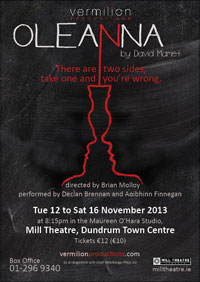
David Mamet's 'Oleanna'
Oleanna
In November 2013, I played the Professor in David Mamet's 'Oleanna'
in the Mill Theatre Studio, Dublin. Oleanna is a powerful play about
power – two people using and abusing it – a young woman and an older
man — a university student and her teacher. They each in turn take
and lose control of an emotional powder keg. In the hands of these
characters, and the words they use and abuse, their failure to
connect and communicate leads to an interpersonal minefield.
Considered to be one of David Mamet’s most controversial plays, this presentation of Oleanna by Vermilion Productions brought the Pulitzer Prize winning playwright’s compelling drama to the Mill Theatre in November 2013.
David Mamet is deservedly famous for many aspects of his writing, but none more than his unique ability to capture the essence of natural dialogue, particularly when it involves complex or even chaotic, disjointed thinking by his characters. In Oleanna he positions his actors in one of his signature minimalist settings and has them deliver some of the best examples of his craft. The background to the play, the production and the people behind it are covered at VermilionProductions.com but you can also Read more here.
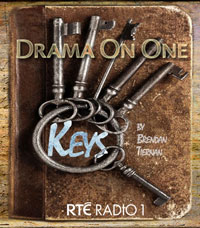
Play broadcast on RTÉ Radio 1 series 'Drama On One'
'Keys' — radio play for RTÉ 'Drama On One' series
On Sunday 18 December 2016, a radio play by Brendan Tiernan called
'Keys' was broadcast as part of the RTÉ Radio 1 'Drama On One'
series devoted to new Irish writing. My character in the play was Fr
Crowley, who had some advice for a young man in the local school on
what makes a "great man".
The play is a nostalgic look back at an episode in the writer's childhood in North County Dublin in 1979. He recalls his final year of national school and his reluctance to take on responsibility for the school keys – a duty which had become the subject of family tradition and honour. As the play progresses he is challenged to change.
The narrator was Joe Taylor and the other characters were played by Liam Carney, Ian O’Reilly, Aileen Mythen, Caitriona Ennis, Rob Malone, Seána Kerslake and Cameron Simpson. The play was directed by Gorretti Slavin.
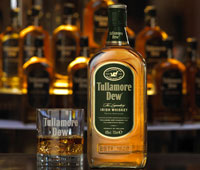
Original performance written for Tullamore Dew Distillery Launch
'Decades' — performance for Tullamore Dew Distillery
Launch
In the autumn of 2014, the Tullamore Dew Distillery reopened
following a major reinvestment by the owners of the brand, William
Grant & Son. I was commissioned to write a short 15 minute
performance piece to be played by four actors during a reception for
100 invited guests at a special event to mark the reopening of the
distillery, which had been closed in 1954.
The event was held in the company's Visitor Centre in Tullamore, Co Offaly on 16 September 2014.
Together with three other actors, I performed the piece that I wrote for the event. The brief was to create an entertainment for the guests which would span the 60 years since the old distillery closed; reflect a few of the changes that had taken place in Irish society and culture; and conclude with a link to the sentiments expressed in the brand's 'Irish True' campaign, which celebrates "the poetic rebel in the heart of the artist, the defiant courage in the soul of the bard, the questioning boldness in the mind of the creator".
The four vignettes were a humorous mix of historical and cultural references with some social commentary delivered by four characters from each of four decades: the 1950s, 1970s, the Millennium and Today.
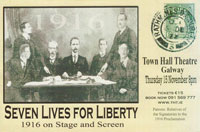
Historical drama in Dublin and Galway
Seven Lives For Liberty
In 2012, I played Tomás McDonagh in 'Seven Lives for Liberty', in
the Liberty Hall Theatre, Dublin (April) and the Town Hall Theatre,
Galway (November). Co-produced by James Connolly Heron (great
grandson of James Connolly) and Frank Allen, 'Seven Lives for
Liberty' presents dramatic vignettes of the signatories to the 1916
Proclamation with music and a multimedia backdrop.
The performance was a theatrical tribute to the men and women behind the Easter Rising of 1916. It combined drama, music and images from the period to portray the lives of the seven signatories to the Proclamation of Independence. It was neither propaganda nor a protest, but set out to illustrate and re-enact events from the not-too-distant past that shaped the course of modern Irish history.
The idea came from the songs of Pat Waters and the show was built around them and other music of the period; and it was set against a backdrop of images that depicted the characters and Dublin city in the early part of the twentieth century.
'Seven Lives for Liberty' began with the surrender at the General Post Office (GPO) on Dublin's O'Connell Street and then went back into the lives of the seven men. The human side of the leaders was portrayed – the people they loved, what they were passionate about and their very different personalities. They included playwrights, poets, writers, teachers and musicians. Read more.
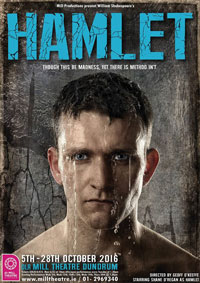
Shakespeare's 'Hamlet'
Hamlet
The fourth Mill Productions Shakespearean presentation, 'Hamlet'
directed by Geoff O'Keeffe, was presented at the dlr Mill Theatre
for four weeks during October 2016. A total of around 5,500 people
attended 27 performances of the play, which was staged each weekday
morning, and also some afternoons, as well as a number of evening
shows during the run. Nearly 60 schools came to see the play, from
all over the country, and the response to what they saw was very
positive, with many of the teachers commenting on how valuable it
was for the students to see Shakespeare's great work brought to life
on stage.
In addition to a number of the supporting roles (First Player, Player King, Sailor and Gravedigger), I provided still images and video sequences, designed sound for the play and created the multimedia representation of the Ghost.
As with the previous Shakespeare productions, the team assembled by director Geoff O'Keeffe and producer Karen Carleton made the whole experience so good for everyone on stage, behind the scenes and in the audience. Read more.
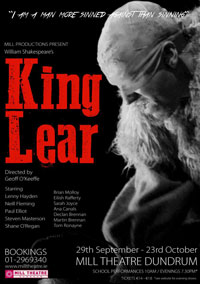
Shakespeare's 'King Lear'
King Lear
The third Mill Productions Shakespearean presentation, 'King Lear'
directed by Geoff O'Keeffe, was at the Mill Theatre in October 2015.
The morning shows for schools filled the house and the few evening
shows on Wednesdays throughout October were almost sold out.
My work for this presentation was in two roles on stage and another two off stage. I played the Duke of Cornwall and, after he dies in Act III, the Doctor towards the end of the play. Behind the scenes I worked on Sound Design and Photography for the cover of the programme and publicity. Some of those images are shown here.
It was great to get an opportunity to work with a wonderful group of like minds, in the pre-production phase and the rehearsal process and finally present the result to a theatre full of people every day (sometimes twice a day) for a month. Read more.
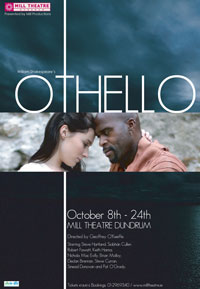
Shakespeare's 'Othello'
Othello
The second Mill Productions presentation of the work of Shakespeare
was 'Othello', directed by Geoff O'Keeffe, at the Mill Theatre in
October 2014. The poster on the left shows Siobhan Cullen as
Desdemona and Steve Hartland as Othello. Once
again I worked on stage and behind the scenes. I played the Duke in
the first half of the play and the Venetian gentleman, Lodovico, in
the second half. My work on Sound Design included the composition of
original music; and after the run I produced a video of interviews
with some members of the team, which was made available to schools
as a teaching resource. More information on that aspect of my work
is in the Multimedia section of this
website.
The play was performed daily for a total of 56 schools and also for evening audiences a few times each week during the run. Read more.
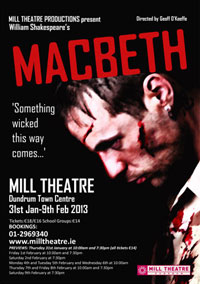
Shakespeare's 'Macbeth'
Macbeth
The first Mill Productions Shakespeare presentation was 'Macbeth',
directed by Geoff O'Keeffe, at the Mill Theatre early in 2013 with
Bob Kelly as Macbeth and Hilda Fay as
Lady Macbeth. My roles were as a member of both the cast
and the creative team behind the production. I played the characters
of Lennox and the Doctor on stage and was also responsible for
designing the sound and digital media used on and behind the set.
More information on that aspect of my work is in the
Multimedia section of this website.
For much of the run, the play was performed twice a day, once in the morning for school groups and again in the evening for a second show that was open to the public. Read more.
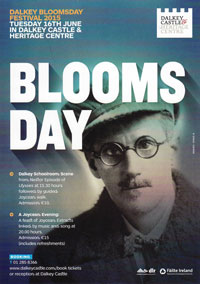
Readings and performances from the works of James Joyce
Bloomsday — the works of James Joyce
Ulysses, to the Romans, was Odysseus to the Greeks in Homer's epic
poem, the Odyssey. James Joyce used the name for his monumental work
about a day in the life of Leopold Bloom as he wended his way
through Dublin on 16 June 1904. That date was also Joyce's first
date with Nora Barnacle, who later became his wife.
The Dalkey Castle & Heritage Centre is near the schoolhouse that was the site of Joyce’s short-lived teaching career. I performed in Dalkey on some Bloomsdays (in 2023, 2022 and also in 2018 and 2015) as actor in a few of the scenes and narrator for some of the others presented in the Bloomsday evening. In some of those years, I have played Joyce's literary alter ego, Stephen Dedalus or the schoolmaster, Mr Deasy, in a dramatisation of the schoolroom scene from the Nestor Episode (Ep.2) of ‘Ulysses’. I have also performed the role of Gabriel Conroy in a scene from ‘The Dead’, and in the Christmas Dinner scene from ‘A Portrait of the Artist as a Young Man’. In 2017, I got to play a very different colourful character in the Christmas Dinner scene, that of John Casey, who expresses his resentment against the local clergy for using the pulpit and confessionals to whip Charles Stewart Parnell with the scourge of immorality, thereby subverting his political effectiveness. In 2022 I had an opportunity to return to the Christmas Dinner scene, this time as Mr Dedalus.
Dalkey Castle has organised Bloomsday events since 2000 with a regular company of performers, directed by Margaret Dunne. Read more.
Joyce fans celebrate 16 June as Bloomsday all over the world. One such event was held in Roly Saul’s Restaurant in Dundrum, Dublin (2013-2016) where I presented readings from 'Ulysses' as part of a traditional Bloomsday brunch in the restaurant with entertainment that included songs from Liz Ryan of the Drawing Room Opera Company. Many of those who attended came in full Joycean dress, adding to the authentic, fun atmosphere. Read more.
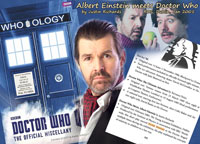
Doctor Who?
Doctor Who
The Young Scientist Exhibition was run by Aer Lingus for many years.
In 2005 it was taken over by British Telecom.
The year 2005 was also the Year of Physics, so it was appropriate that the Young Scientist Exhibition, in that year, made reference and paid tribute to the work of some of the fathers of modern science. I won a tender to produce 'Albert Einstein Meets Doctor Who', which was one such tribute. The drama created by Justin Richards was performed in the exhibition complex within the Royal Dublin Society (RDS) every day, using much of the huge set built for the television presentation, culminating in a performance to 1,200 people on the final Saturday. Read more.
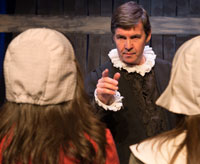
Deputy Governor Danforth
in 'The Crucible'
The Crucible
In 2014, I played Deputy Governor Danforth, in a production of The
Crucible by Arthur Miller. This big, classic play with an ensemble
of twenty actors is based on the Salem Witch Trials of 1692, but
what it explores about the way people behave in communities, what
drives them and how they deal with fear of the unknown has a modern
relevance.
The story that is now known as 'The Salem Witch Trials' began when three women, Sarah Good, Sarah Osborne, and Tituba, a slave from Barbados, were charged with witchcraft. The practice was prohibited by law in that community, but was already viewed less fearfully by the increasingly secular and scientific view of the world prevalent in the homeland the Puritans left behind in England.
In a tragic chain reaction fuelled by a curious mix of local animosities and greed, personal and political power-plays and paranoia together with superstitious and religious beliefs, over 200 people were accused of practicing the Devil's magic. Between June and October 1692, this 'pure' society embarked upon an orgy of paranoid suppression, which included imprisonment without trial, where at least five men and women died in the unsanitary conditions, while their families were required to pay rent for their incarceration; torture to extract confession, which killed one Giles Corey; and execution by hanging, which ended the lives of 19 other citizens in Salem, a small village with a total population of around 500 people.
Over two hundred years later, Arthur Miller was caught up in another period of paranoid suppression — different in practice, but with parallels in principle. He was suspected of being sympathetic to Communism, because of petitions he signed and meetings he attended in the 1940s and 1950s. He was brought before the House Committee on Un-American Activities (HUAC) in 1956 and was convicted of contempt of Congress because he refused to 'name names'. Read more.
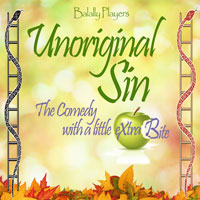
David Tristram's 'Unoriginal Sin'
Unoriginal Sin
This comedy written by David Tristram and directed by Brian Molloy
was in the Mill Theatre, Dublin the week after Easter (26 to 30
April 2011).
In this hilarious comedy, Eve dreams of buying Eden cottage and garden, but paradise is in the hands of its two divorcing serpentine owners and the games they play!
This play was described by its creator as "the comedy with a little extra bite", perhaps because of its biting wit and the fact that it has some wry commentary on the human condition, if you're open to it. I played the lead character, Bill, an author whose romantic novels have earned him great financial success, but not a whole lot more. When you add in his wife, with whom he trades insults, his lawyer friend Miles who is arranging their divorce, the younger Eve, who catches his eye, her nerdy, librarian boyfriend Neville and her 'father', Fr Tomlin, you've got a cast of characters with a tale to tell that's full of great lines and lots of fun. Read more.
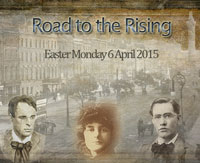
'Road to the Rising' organised by RTÉ for Easter Monday 2015
Road to the Rising
For Easter Monday 6 April 2015 RTÉ organised a series of
commemorative events under the title ‘Road to the Rising’. With lots
to see, hear and interact with, the day captured a flavour of what
it was like to be in Dublin 100 years ago.
There were more than sixty events, starting at 11am and running throughout the day until 5pm, in and around O'Connell Street, where tens of thousands of people gathered to join in under clear blue skies and warm sunny weather.
RTÉ produced a short video to promote the events on Easter Monday.
My involvement was in four of those events — a series of readings on the stage of the Abbey Theatre in the morning of Easter Monday followed by the performance of a short excerpt from a 1915 play, adapted for radio, from the top of a tram in the centre of O’Connell Street. In the afternoon a longer section of the play was performed in the Abbey Theatre; and I played the role of Fr Nolan in the full version of the play from the stage of the Peacock Theatre as the final event of the day. 'The Spancel of Death' by T H Nally, which was adapted and directed for radio by Gorretti Slavin, was to have been performed in the Abbey Theatre during Easter Week 1916. Set in the West of Ireland and based on a true story, its portrayal of power and influence between ancient and modern beliefs has some interesting parallels in the background to the rising that prevented its original performance in 1916. Read more.
-200px.jpg)
Series of readings in the National Library, Dublin
Girls in Silk Kimonos
The work of many writers contributed to the 'decade of
commenorations' in Ireland. Towards the end of 2018 and again in the
first quarter of 2019, I took the role of the Narrator in a series
of readings of a play by the late Miriam Gallagher, 'Girls in Silk
Kimonos'. In addition to framing the dialogue between the two women
characters, the narrator also gives voice to about ten other
characters. The 'Girls' in the play, Countess Constance Markievicz,
played by Mia Gallagher (the writer’s daughter) and Eva Gore-Booth,
played by Una McNulty, tell the story of two remarkable women who
lived in the turbulent time that was the early twentieth century.
Just like many people at that time, Constance kept a diary and wrote many letters. The play is based on letters exchanged between Constance and her sister Eva. It paints an interesting picture of the people and the time through which they lived.
The readings were directed by Conor O'Malley for Dublin Lyric and music was provided by Ciaran Tourish of Áltan with song from MJ Sullivan. The Mezzanine Room at the National Library, Kildare Street, Dublin was the venue and the performances were supported by the Commemoration Unit of the Department of Culture, Heritage and the Gaeltacht. For more see the Dublin Lyric website.
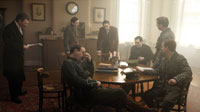
Scenes from the TG4 series 'Seachtar na Cásca'
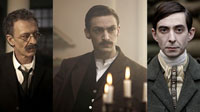
Seachtar na Cásca
This bi-lingual, seven-part historical television documentary
series, directed by Dathai Keane, featured dramatic reconstructions
of key scenes and examined the lives of the seven men who were the
signatories to the 1916 Easter Proclamation. It was the first major
television series on the Rising since the 50th anniversary in 1966.
It went into production by
Abú Media in
the second half of 2009 and the first episode was shown on the Irish
TV channel, TG4, in September 2010.
The seven episodes in the series cover Patrick Pearse, James Connolly, Joseph Plunkett, Sean Mac Diarmada, Eamonn Ceannt, Thomas Clarke and Tomás McDonagh.
I worked on two minor roles in the first two programmes. Episode 1, which featured the story of the ‘Father’ of the Rising - Tom Clarke. I was a British Prison Warden in that first episode. The shoot was in Kilmainham Jail in November 2009 - a cold, bleak location that sets the scene for the stories that unfold. In another scene for Episode 2, which didn’t make it into the final edit, I played one of two Dublin gentlemen, in James Connolly's kitchen, being persuaded by him to join his new Socialist party.
The series won the Irish Language Award at the 2011 IFTA’s and Best Factual Series award at the Celtic Media Festival 2011. Read more.
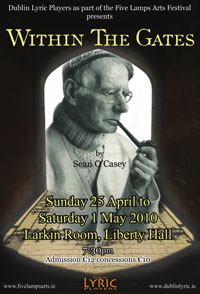
O'Casey's 'Within The Gates'
Within The Gates
As part of the Five Lamps Festival, Dublin Lyric Players presented
'Within the Gates', a play by Sean O’Casey that has been rarely
produced.
The play is an intriguing, experimental and expressionist work, written while the author was still in his most recognisably creative phase, during the late 1920s.
The title comes from the location of the action — around Speakers’ Corner in Hyde Park — during the four seasons of the year. The life of a Young Woman is gradually unfolded through her interactions with the visitors to the Park, including the atheist character that I play. As she stumbles through the seasons of her own life, O’Casey paints the broadest of human canvases in bold colours.
The performances were from Sunday 25 April to Saturday 1 May 2010 in the Larkin Room, Liberty Hall. Read more.
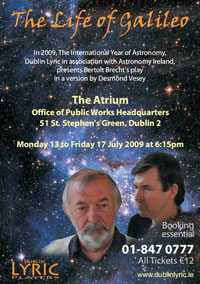
'The Life of Galileo' by Brecht
The Life of Galileo
The performance space in the headquarters of The Office of Public
Works, when it was located in St Stephen's Green, Dublin, was the
venue for a production of Bertolt Brecht's 'The Life of Galileo'
presented by Dublin Lyric Players
The International Year of Astronomy (2009), was marked by many events throughout the year. The Italian scientist and philosopher Galileo Galilei was a key figure in these celebrations. He turned a telescope to the skies 400 years ago and made a series of significant discoveries that were the foundation of modern astronomy.
My character in 'The Life of Galileo' was the Cardinal Inquisitor. He is a pragmatic, but sinister and very political prince of the church, who argues for the full rigours of the Inquisition to be brought to bear on Galileo when his scientific discoveries are seen to be in conflict with the teachings of the Catholic Church. The play explores the powerful influences of science and religion on society together with Galileo's personal struggle with the choices he made. Read more.
